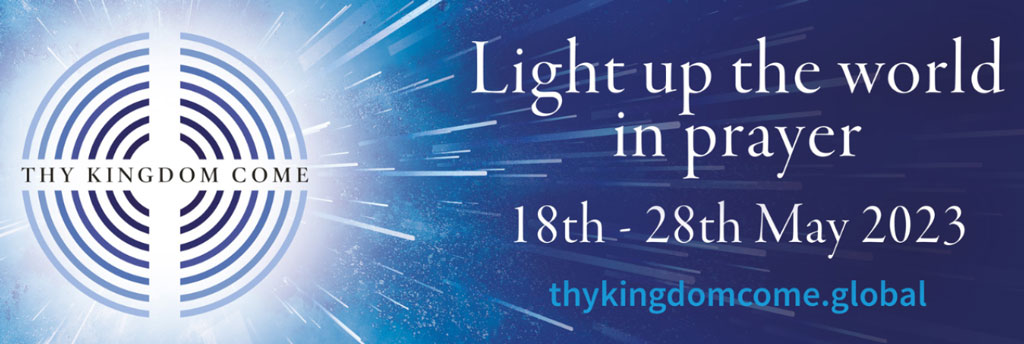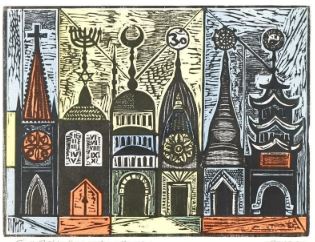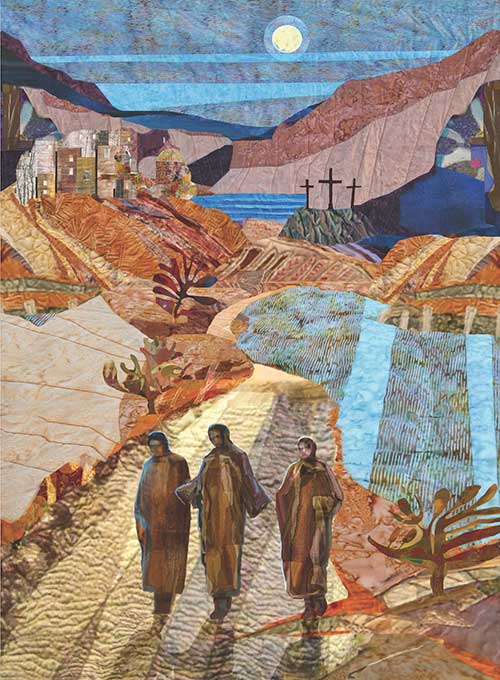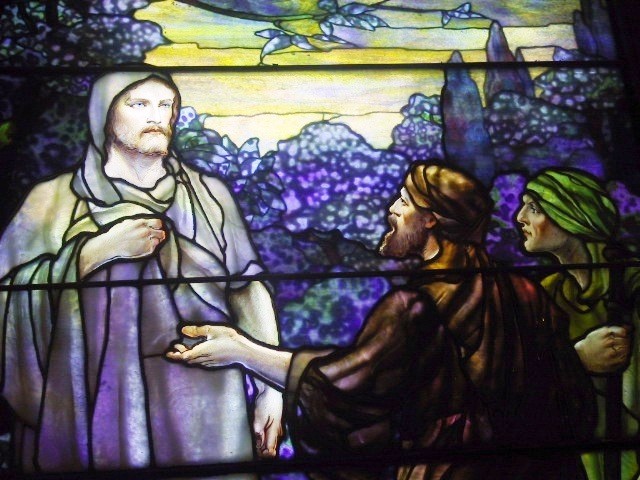Big Picture:
1) This is the fifth of the seven weeks of Eastertide. Between now and Pentecost, we’ll continue exploring Jesus’ teachings on faith and intimacy with God.
2) This week’s reading from the Gospel of John includes one of the most famous — and infamous — verses in the New Testament: Jesus’ remark that “No one comes to the Father except through me” (John 14:6). Too often, this sentence is distorted into a dogma of exclusion, as if Jesus is saying, If you’re not Christian, you’re damned. As we’ll see, this is a drastic misunderstanding of what Jesus is actually up to in this story.
3) What’s he up to? He’s trying to reassure his anxious, heartbroken disciples. Why are they anxious and heartbroken? Jesus has just delivered a devastating one-two punch: first, the news that “I am with you only a little longer” and “Where I am going, you cannot come” (John 13:33); and second, that Peter — and by extension, the whole group — will deny and desert him in his imminent hour of need (John 13:38). For the disciples, worse news could scarcely be imagined. They’re stunned, and beginning to panic — and at precisely this moment, this week’s passage begins.
4) The larger context is John’s version of the Last Supper (John 13-17). John doesn’t include the Eucharist in his narrative, instead focusing on how Jesus washes the disciples feet and then delivers the so-called “farewell discourses” — basically his last words of guidance and consolation for his followers as he takes his leave. The broad strokes in this section of John, then, are that Jesus is on his way out, the Holy Spirit is on her way in (as we’ll see in next week’s reading; see John 14:15-26), and the post-Easter church is about to be born, a community that, Jesus insists, will go on to do even “greater works” than he did (John 14:12). Christians tend to valorize Jesus’ time “in the flesh” — but for John, the symphony of salvation continues to crescendo with each movement, and the rise of the Spirited-church-abiding-in-Jesus is an even “greater” phase of God’s redemptive work.
Scripture:
1) The disciples are distraught — and understandably so! Think of it: from their point of view, here is the Messiah, the one they believed would deliver them and the whole world, the one on whom they had pinned all their hopes, all their lives — and now he’s leaving? Not only leaving — now he’s going to suffer, to be humiliated, desecrated, vanquished? And his disgrace — in the end, wouldn’t it amount to their disgrace as well? No wonder they’re disoriented, wide-eyed, and afraid. Thomas says out loud what they’re all thinking: “How can we know the way?” (John 14:5).
2) This context of crisis and desperation is the interpretive key for understanding what happens next. Jesus’ response, so far from a cerebral, scolding lecture on salvation or “who will get to heaven,” is actually an exercise in urgent, poignant pastoral care. He’s assuring his companions that his imminent departure is not abandonment, but rather a move that will make way for an even deeper intimacy. It’s as if he’s saying, On one level, I’m about to leave you — but on a deeper level, we’ll be closer than ever. Don’t worry. Take heart. Trust me — and trust the One who sent me!
3) Thomas asks, “How can we know the way?,” and Philip follows up by asking Jesus to “show us the Father” — as if to say, At least give us some coordinates, so we can find our way to “God’s house” once you’re gone (John 14:5,8,2). Jesus’ response amounts to this: You already know the Way! You know the Way we’ve been traveling, the Truth we’ve been learning, the Life we’ve been living — so just keep going, and when you do, I’ll be right there with you, because I am the Way, the Truth, and the Life. I’m not merely your ‘guide’; I am the Way. So keep going and learning and living toward God, and we’ll be together as you go…
4) Remember, the Gospel of John begins by identifying Jesus with the divine Logos, the life-giving divine Word, Thought, Reason, Pattern (all legitimate translations of the Greek word, logos) underneath and at the heart of everything. For John, by living in and through this Pattern, by walking in and through this Way, we live and walk in communion with the One who, in the beginning, was with God and was God (John 1:1-5).
5) In other words, Jesus insists that even though he’s leaving, his followers’ everyday lives of living out his teachings — especially the new commandment he’s just given, to “love one another as I have loved you” — will be sure signs of their ongoing communion with him. The tone of this teaching, then, isn’t stern admonition; he’s not saying, If you want me to be with you, you’d better follow my instruction (much less, If you want salvation, you’d better be a Christian!). On the contrary, his tone is tender-hearted, since his aim is to console and assure his friends: Don’t worry. Just keep following my instruction, walking in the Way — and I’ll be with you. In fact, our companionship will be even closer than it is now. Today we walk side by side — but in the days to come I will live in you, and you in me. Today, you walk in my footsteps — but in the days to come you will walk, so to speak, ‘in my feet,‘ and I will walk in yours. You will be my body, my hands and feet and word for a world that needs healing and justice and good news. You see? I’m not abandoning you. On the contrary, I will abide in you, and you will abide in me (John 15:4). I will not leave you orphaned! (John 14:18).
6) The upshot of all this — Keep going in the Way, and we’ll be together, closer than ever! — is that Jesus wants to leave his disciples with a profound sense of confidence and equanimity: in a word, “peace” (John 14:27). John writes in Greek, of course, but in the background here is the ancient Hebrew notion of shalom — not just the absence of conflict, but the vibrant presence of personal and communal well-being. My peace I give to you, Jesus says near the end of this chapter, a sentiment he’ll repeat when he appears to the disciples after his passion and resurrection (John 14:27; 20:19,21,26).
Read more
 “Thy Kingdom Come” is celebrating its 7 year anniversary in 2023. Since May 2016, The Archbishop of Canterbury, Justin Welby, and the people of Thy Kingdom Come have been bringing the world together in prayer. St Peter’s has been part of this international prayer initiative for several years. Here is the website. Check out their new mobile app.
“Thy Kingdom Come” is celebrating its 7 year anniversary in 2023. Since May 2016, The Archbishop of Canterbury, Justin Welby, and the people of Thy Kingdom Come have been bringing the world together in prayer. St Peter’s has been part of this international prayer initiative for several years. Here is the website. Check out their new mobile app.








